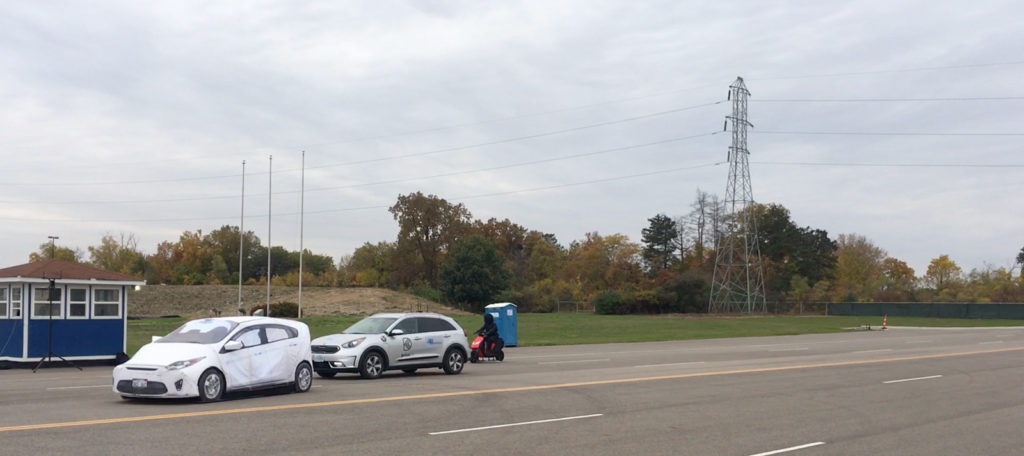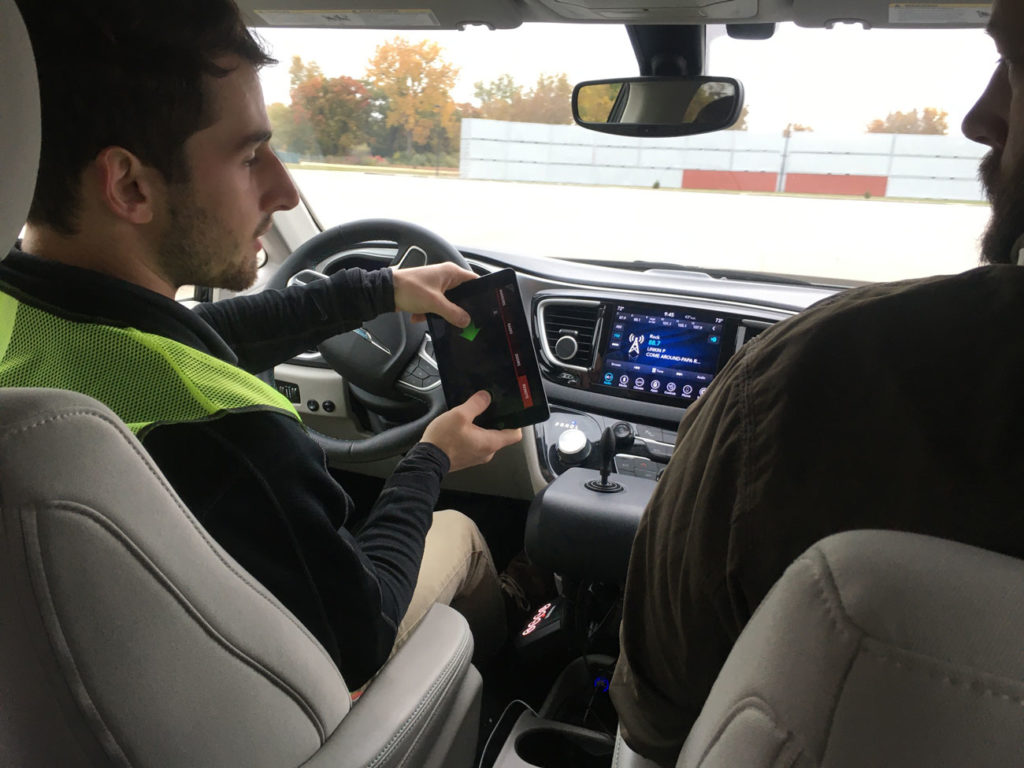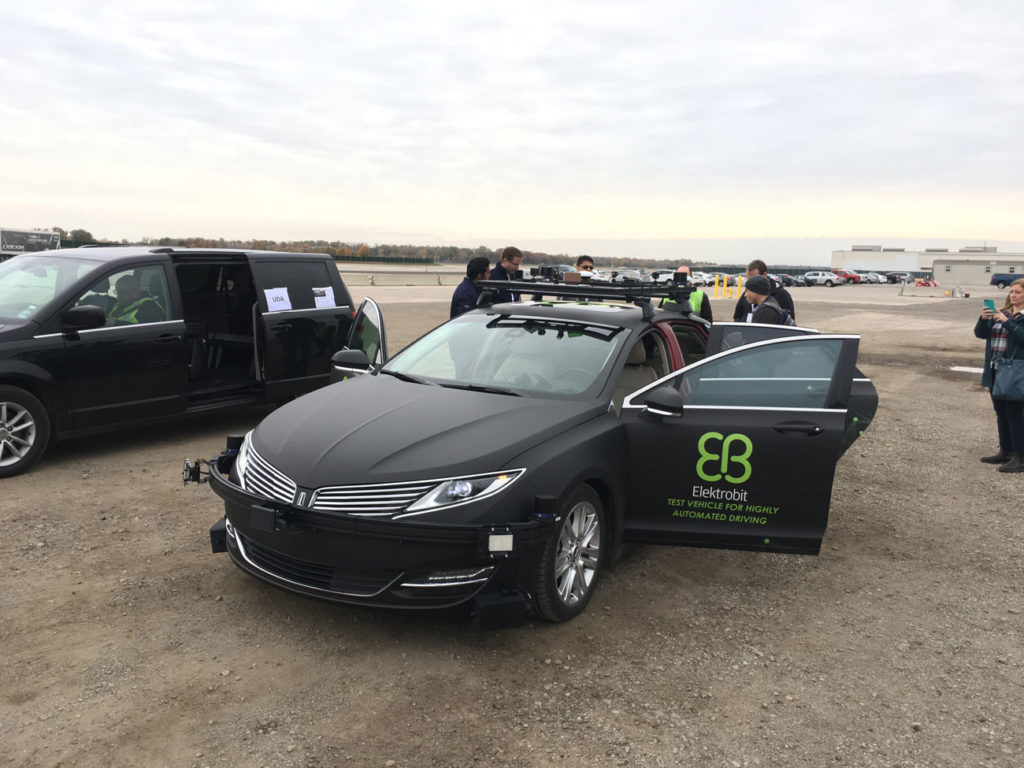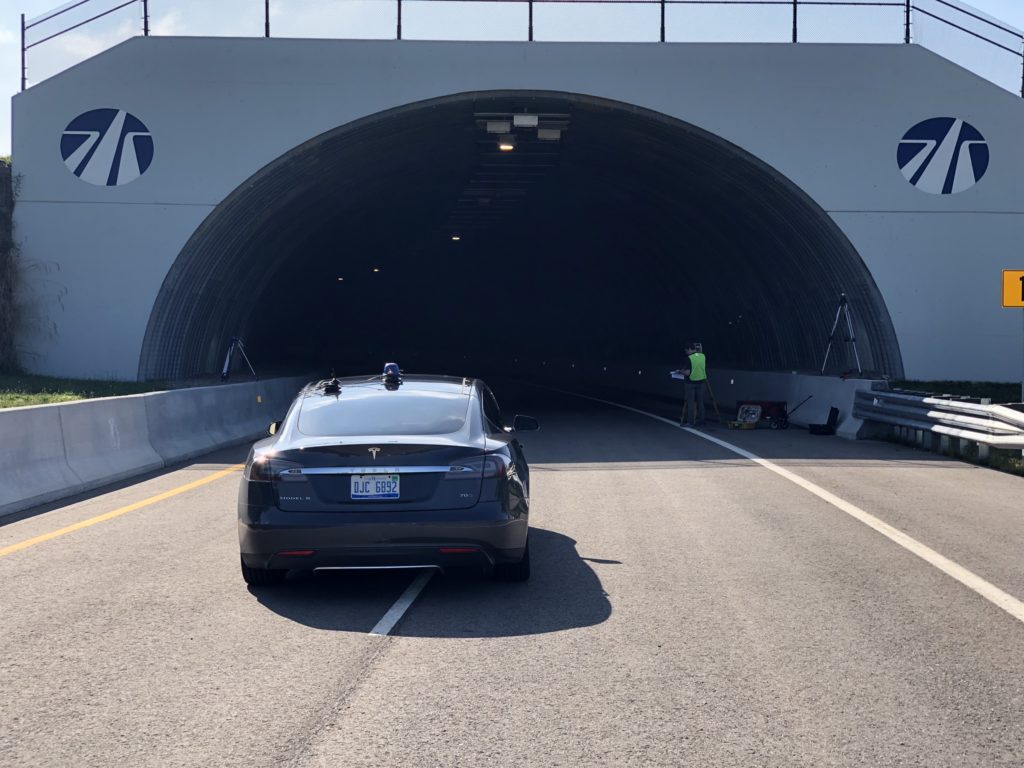This year’s Automotive Testing Expo and Autonomous Vehicle Technology Expo events in Novi, MI, included a brand new opportunity for visitors to witness first hand a wide range of ADAS and AV technologies put to the test during an exclusive ‘Live Demo Day’.
Held at the American Center for Mobility’s (ACM) impressive Willow Run proving ground, the Live Demo Day enabled ten leading companies to demonstrate their latest AV and ADAS development technology to hundreds of engineers and decision makers.
After three days of intensive product sourcing and networking at both exhibitions, visitors also got the chance to see some of the technology from the show in action at the ACM, which features roads and traffic set-ups to simulate the breadth of situations an automated vehicle might encounter.
ADAS track testing
One of the more elaborate displays was by AB Dynamics, who brought out its whole arsenal to test ADAS-equipped vehicles, showing how its technology can synchronize assets in a test scenario. On a six-lane road, the demonstration showed a soft target car cut off a test car while a moped was changing lanes in the test car’s blind spot. A situation like this would be used to asses a car’s emergency braking and avoidance systems

Central to the display was a subject vehicle which was being controlled through drive-by-wire using AB Dynamics’ Flex-0, which takes over the car’s built-in EPAS and braking systems. The soft targets – a car and a moped – are self-propelled thanks to electrically-powered platforms that follow custom paths. Finally, there was a signal hut running the company’s Ground Traffic Control system, which controls all the vehicles on the test track, while its ‘mesh’ radio allows two-way communication between all assets.
Drive-by-wire systems
Moving from ADAS to the technology for full autonomy, there were two companies at the Live Demo Day showcasing drive-by-wire solutions – but in very different ways.
Schaeffler Group had outfitted a minivan with its own actuators and control systems to take over steering, throttle and braking, while also taking control of the CAN bus system to have the ability to control all secondary functions. The system grew out of Schaeffler’s acquisition of the Space Drive System through a joint venture with Paravan, which originally developed the system for use in adapted cars for disabled people.
 For the demonstration, the car could be controlled either by a joystick – as it would be in an adapted car – or through an iPad, to demonstrate the system could be hooked up to custom software. At the moment, the system is aimed at autonomous shuttle projects.
For the demonstration, the car could be controlled either by a joystick – as it would be in an adapted car – or through an iPad, to demonstrate the system could be hooked up to custom software. At the moment, the system is aimed at autonomous shuttle projects.
New Eagle had a different approach, using no additional hardware other than an ECU to run the main interface. All its commands go through the CAN bus, though its system supports Ethernet as well. It then uses the OEM power steering motor and throttle and braking systems. New Eagle is aiming squarely at developers, as director of programs Kevin Alley explained: “we’re a production control supplier for a variety of applications. We provide drive-by-wire kits for autonomous vehicle developers to go on top of and then fleet-deploy.”
Collaboration is key
Elektrobit drove its demo car 4,200 miles, all the way from its California headquarters, to the ACM in Michigan to show off the capabilities of its EB Assist Test Lab platform. The Lincoln was outfitted with a wide range of sensors to demonstrate how EB Assist Test Lab can manage the vast amounts of data that AV and ADAS testing creates and help development teams collaborate better.
 Head of technology research Jérémy Dahan explained, “we do not provide or own data – we provide OEMs and Tier 1s access to the platform. Anyone can then partner with them through the platform. What we do is create an ecosystem where several companies can collaborate on a project. What we wanted to tackle was the problem of companies working with 10 different partners and 10 different platforms”
Head of technology research Jérémy Dahan explained, “we do not provide or own data – we provide OEMs and Tier 1s access to the platform. Anyone can then partner with them through the platform. What we do is create an ecosystem where several companies can collaborate on a project. What we wanted to tackle was the problem of companies working with 10 different partners and 10 different platforms”
Key to the platform is that it collects data from automated sensors, stores it, allows annotations to be added both manually and automatically, and then makes it available on the cloud for further processing and viewing by those working on the project.
Packed program
This report offers just a glimpse of what the Live Demo Day at the ACM had to offer. The program included many more displays, including from AVL, who was showcasing how its technology could produce an objective assessment of the driving performance of automated systems. Racelogic demonstrated how its VBOX Indoor Positioning System (VIPS) could accurately measure speed, position and attitude (pitch/roll/yaw), even in in areas where GPS is not available.
Humanetics and S-E-A demonstrated their ultra-flat overrunable robots for soft targets, automated test drivers and vision detection systems. Finally, Keysight showed how it can test a vehicle’s connectivity (2/3/4/5G, V2X, WiFi, Bluetooth) in a repeatable environment, while simulating the vehicle in a live network and in a congested environment.


